Crocosmia Lucifer: The Ultimate Guide To Companion Planting
Crocosmia Lucifer: The Ultimate Guide to Companion Planting
Crocosmia Lucifer is a beautiful, easy-to-grow perennial that is known for its vibrant red flowers. It is a popular choice for gardens in USDA zones 6-9, where it can thrive in full sun and well-drained soil.
In addition to its striking appearance, Crocosmia Lucifer is also a valuable addition to the garden because it attracts pollinators such as bees and butterflies. It is also deer-resistant, making it a good choice for gardens in areas with high populations of these animals.
If you are considering adding Crocosmia Lucifer to your garden, you may be wondering what other plants it would be a good companion for. In this guide, we will discuss some of the best companion plants for Crocosmia Lucifer, as well as some tips for planting and caring for this beautiful flower.
Best Companion Plants for Crocosmia Lucifer
When choosing companion plants for Crocosmia Lucifer, it is important to consider the plant's needs in terms of sunlight, moisture, and soil type. Crocosmia Lucifer prefers full sun and well-drained soil. It is also drought-tolerant once established.
Some good companion plants for Crocosmia Lucifer include:
- Agapanthus: This South African native is another tall, summer-blooming perennial that loves full sun and well-drained soil. Agapanthus has blue or white flowers that contrast nicely with the red flowers of Crocosmia Lucifer.
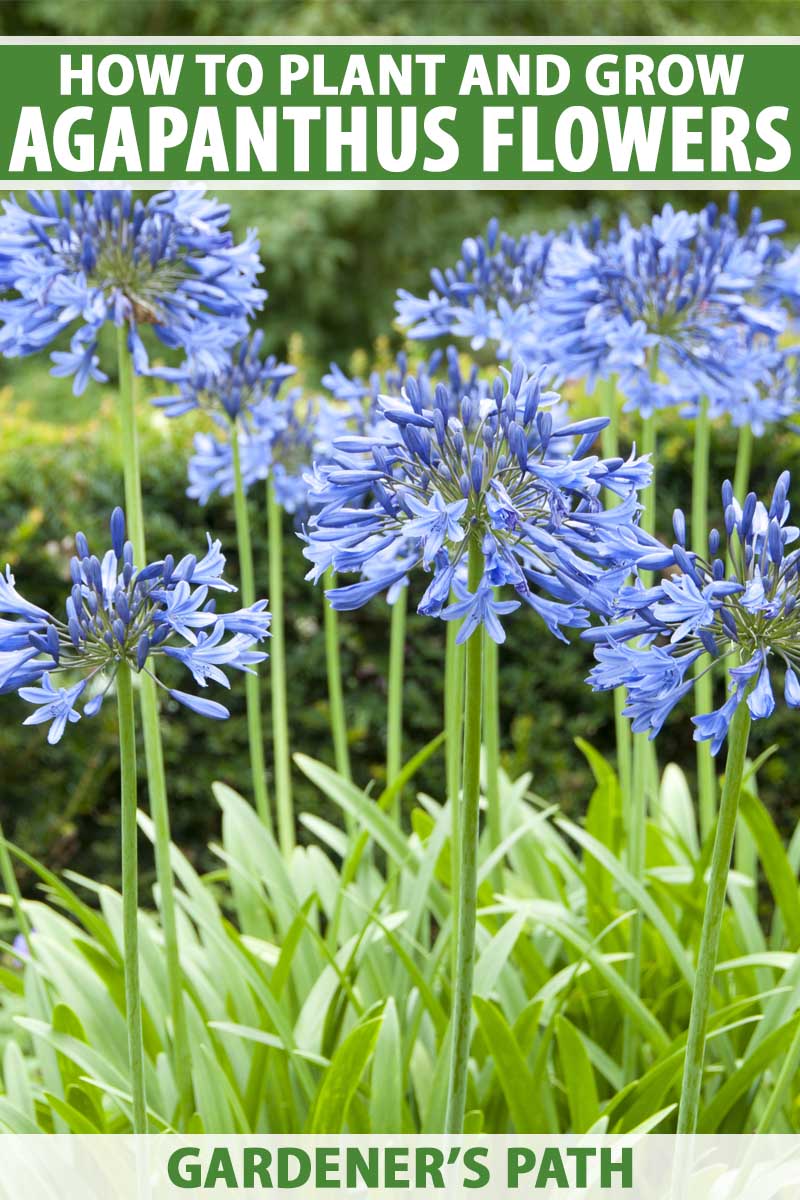
- Canna lilies: Canna lilies are another tall, tropical-looking perennial that is a good companion for Crocosmia Lucifer. They come in a variety of colors, including red, orange, yellow, and purple. Canna lilies prefer full sun and moist soil.
- Echinops: Echinops is a spiky, blue-flowered perennial that is drought-tolerant and deer-resistant. It makes a good contrast plant for the softer, more delicate flowers of Crocosmia Lucifer.

- Verbena bonariensis: Verbena bonariensis is a tall, airy perennial that blooms in shades of purple, pink, and white. It is a good choice for gardens that need a touch of height and color. Verbena bonariensis prefers full sun and well-drained soil.

Planting and Caring for Crocosmia Lucifer
Crocosmia Lucifer can be planted in the spring or fall. When planting, dig a hole that is twice the width of the corm and just as deep. Place the corm in the hole with the pointed end facing up. Backfill the hole with soil and water well.
Crocosmia Lucifer does not require a lot of fertilizer. A light application of compost in the spring will help to promote healthy growth. Water the plant regularly, especially during hot, dry weather.
Crocosmia Lucifer is not prone to many pests or diseases. However, it can be susceptible to spider mites and aphids. If you notice any pests, you can treat them with insecticidal soap or neem oil.
Conclusion
Crocosmia Lucifer is a beautiful and easy-to-grow perennial that is a great addition to any garden. With its vibrant red flowers and deer-resistant foliage, it is sure to add a touch of color and interest to your landscape. By planting it with some of the companion plants listed above, you can create a beautiful and harmonious gardenscape.
Crocosmia Lucifer is a beautiful and vibrant flower that can add a touch of color to any garden. But what companion plants should you choose to complement its fiery blooms?
Here are a few ideas:
- Helenium is a tall, daisy-like flower that comes in a variety of colors, including orange, yellow, and red. It will bloom at the same time as Crocosmia Lucifer, and its tall stature will help to add structure to your garden. [link to website address]
- Kniphofia, also known as red hot pokers, is another tall flower that would make a great companion for Crocosmia Lucifer. Its spiky blooms come in a variety of colors, including orange, red, and yellow.
- Dahlias are a popular choice for companion plants because they come in a wide range of colors and sizes. They will bloom at the same time as Crocosmia Lucifer, and their vibrant colors will create a stunning display in your garden.
- Ornamental grasses are a great way to add texture and interest to your garden. They will provide a backdrop for Crocosmia Lucifer's blooms, and their swaying movement will add a touch of movement to your garden.
No matter what companion plants you choose, make sure they have similar growing conditions to Crocosmia Lucifer. Both plants need full sun and well-drained soil.
To learn more about companion planting for Crocosmia Lucifer, visit Gardenia Inspiration.
FAQ of crocosmia lucifer companion plants
- What are some good companion plants for crocosmia lucifer?
Some good companion plants for crocosmia lucifer include:
- Daylilies (Hemerocallis): Daylilies are another summer-blooming perennial that prefers full sun and well-drained soil. They come in a wide variety of colors, so you can choose ones that will complement the orange and red flowers of crocosmia lucifer.

- Agapanthus (African Lily): Agapanthus is a drought-tolerant perennial that produces clusters of blue or white flowers in the summer. It can grow quite tall, so it's a good choice to plant behind crocosmia lucifer.
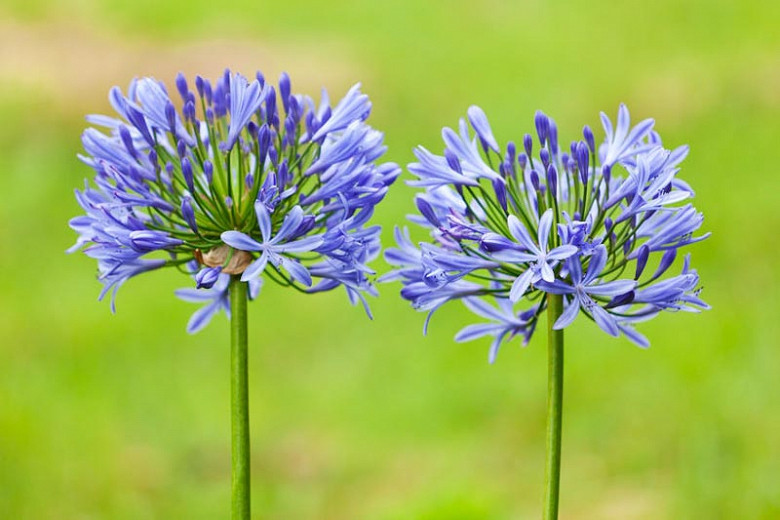
- Canna lilies (Canna indica): Canna lilies are tropical plants that produce large, brightly colored flowers in the summer. They can grow quite tall, so they're a good choice to plant behind crocosmia lucifer.
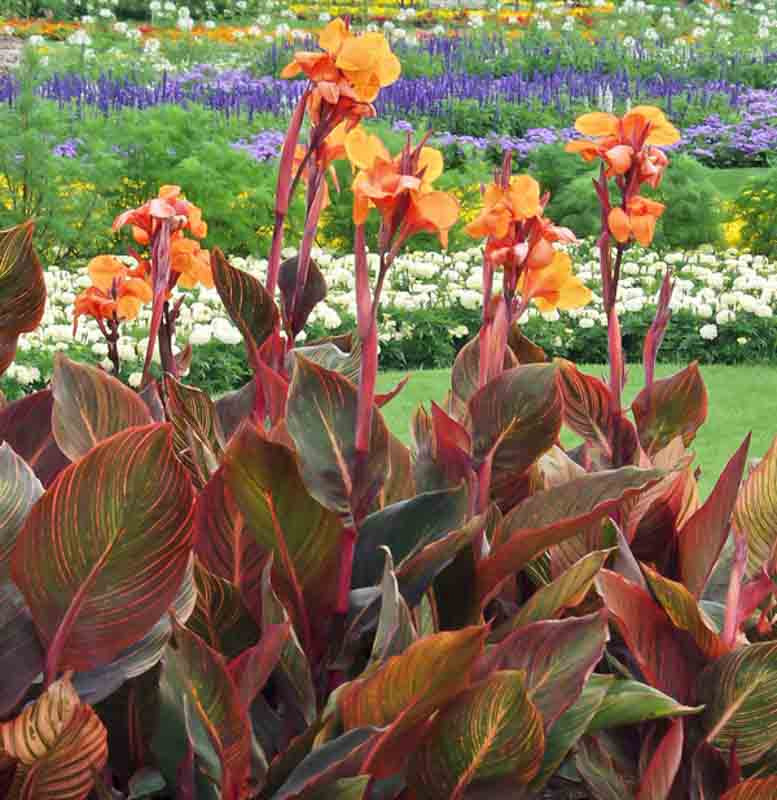
- Lavender (Lavandula): Lavender is a fragrant herb that blooms in the summer. It prefers full sun and well-drained soil. Lavender can help to deter pests from crocosmia lucifer.

- Verbena (Verbena): Verbena is a summer-blooming annual that comes in a wide variety of colors. It prefers full sun and well-drained soil. Verbena can help to attract pollinators to crocosmia lucifer.
- How far apart should crocosmia lucifer plants be planted?
Crocosmia lucifer plants should be planted about 12-18 inches apart. This will give them enough room to grow and spread.
- How much sunlight do crocosmia lucifer plants need?
Crocosmia lucifer plants need full sun to partial shade. They will not flower well in full shade.
- What type of soil do crocosmia lucifer plants need?
Crocosmia lucifer plants need well-drained soil. They will not tolerate wet soil, as this can cause their corms to rot.
- How do I care for crocosmia lucifer plants?
Crocosmia lucifer plants are relatively easy to care for. They need to be watered regularly, especially during the summer months. They should also be fertilized once a month with a balanced fertilizer. In the fall, the foliage will die back. The corms can be dug up and stored in a cool, dry place for the winter. In the spring, the corms can be replanted.
Image of crocosmia lucifer companion plants
Here are 5 different images of "crocosmia lucifer companion plants" from Pinterest:
- Dahlias are a good companion plant for Crocosmia Lucifer because they both have similar flower colors and bloom at the same time. Dahlias are also relatively easy to care for, so they can help to make your garden look lush and well-maintained.
- Salvias are another good companion plant for Crocosmia Lucifer because they come in a variety of colors that can complement the orange and red hues of the Crocosmia flowers. Salvias are also drought-tolerant, so they can help to add some color to your garden even during hot, dry summers.
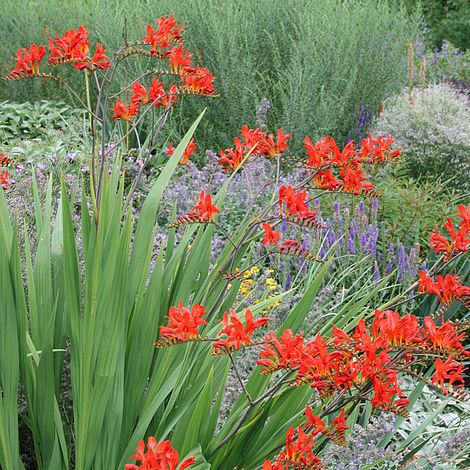
- Canna lilies are a tall and tropical-looking plant that can add some height and drama to your garden. They also bloom at the same time as Crocosmia Lucifer, so they can help to create a long-lasting display.
- Zinnia is a low-maintenance annual that comes in a variety of colors. It can be planted in front of Crocosmia Lucifer to add some contrast and interest to your garden.
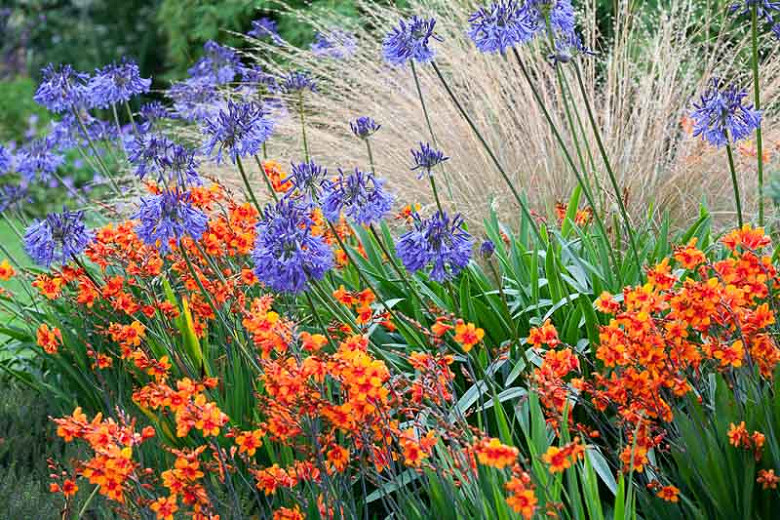
- Verbena is another low-maintenance annual that comes in a variety of colors. It can be planted in front of Crocosmia Lucifer to add some trailing flowers and a soft texture to your garden.



Post a Comment for "Crocosmia Lucifer: The Ultimate Guide To Companion Planting"